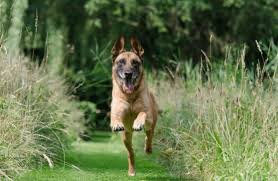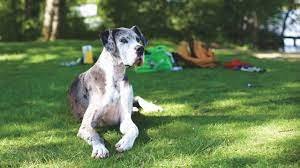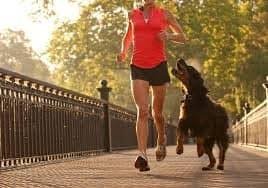Exercising A Large Breed Puppy
Bringing a puppy home can be like installing a backup generator on full power - they just have so much energy! We all know that puppies need plenty of mental and physical stimulation, not only for their development, but to keep them from finding destructive behaviors that can be sometimes hard to break. Let’s dive in.
How much puppy exercise is too much for large breeds?
We all know that large breed dogs are prone to joint problems and with this knowledge we need to make sure we are not over exercising our puppies. In spite of their shorter lifespan and quick growth, large dogs take a long time to fully develop. The younger they are, the shorter your exercise time should be. Even if your four month old German Shepard is more than happy to keep up with you on a long hike, you should save that kind of exercise until they are older. Because large breeds do not fully develop until about 15 months, you won’t want to start any activities like agility early. Any strain on underdeveloped joints can lead to bigger problems in the future. You should let your puppy nap when they feel like it. Shorter bursts of exercise will give them the chance to rest when their body tells them it’s time.
Tips for safe large puppy exercise.
There are a few things you can begin to teach your puppy and that you should bear in mind as you learn how much and how often your puppy needs exercise. The first is to teach your pup how to walk on a leash. In the beginning, puppies tend to see leashes as toys and may enjoy trying to nip them on walks. Keep their attention away from the leash and on you by carrying treats and working on skills such as sitting throughout the first several walks. Over time, they will get used to the leash and become better at walking with it. You have to also keep in mind timing and how long you are walking with your puppy. Start with short, slow walks and work your way up to longer walks. Do not begin jogging with your pup until they are least six months old and keep the jogs short until they are at least 15 months old. You also want to be aware of the weather and temperature outside. Keep your puppy walks away from the hottest parts and coldest parts of the day. Puppy pads can be very sensitive so walking on pavement when it is too hot or too cold can cause injury to your pup.
Types of puppy exercise to try.
We have mentioned walking and running, which are great forms of exercise for you and your pup. However, there are plenty of other ways to get your puppy moving and active that will let your puppy play and wear them out without causing stress and strain on their growing bodies.
Playing with toys - We all know that puppies love to chew, tug and tackle. Toys are a great way to hold their attention, expend some energy and even show them what is okay to chew on. Keep in mind that puppies have their baby teeth that will finish growing in about six weeks and they will begin to lose their baby teeth at about three months of age. By six months your pup will have their adult teeth, but until then you should stick to toys that are designed for teething. Fetch is a great way to play with your pup. However, if they decide to sit and chew on their toy and not bring it back they may be telling you they are ready for a break in play. Tug-o-war is also an okay activity for puppies, but you need to be mindful of their puppy teeth. They are going to fall out eventually but that does not mean they should be yanked out prematurely. Let your puppy do the tugging while you sit back and hold the toy firmly in one place. No matter what play you engage your pup in, play should last for no more than ten minutes at a time to give you pup time to rest and recoup.
Obedience training - Learning how to sit and stay may not be high-impact exercise, but it still involves activity and it is great for mental stimulation for your pup. Work on basic commands for no more than ten minutes at a time. Change up the space you use for training as your pup learns more tricks. Move about your home and yard and test their ability to focus despite all the distractions that may arise. Mixing low-impact activities with your pup's more vigorous play can increase the amount of time they are active without doing too much too quickly.
Exercise combined with mental stimulation - While we are quick to assume bad puppy behavior is from having too much energy, it can also arise when our pups are bored and looking for something to do. In addition to physically stimulating activities, we should also be engaging our pups in mental stimulation. Scent games are great to get your puppy moving as well as using their brains. Use treat toys that they are drawn to and hide them around your home or yard and let them sniff out the location. Doing this a few times during the day will keep your pup interested and will wear them out.
How much exercise and how often?
While there is no one size fits all for this question, understanding how much sleep your puppy needs will help you gauge how much play they may require. On average, puppies sleep about 18-20 hours per day. Bigger breeds tend to sleep more than smaller breeds, so do not be surprised if your Great Dane only gives you four to six waking hours per day. Of the hours your puppy is awake, only a fraction of them should be spent on exercise. For puppies six months or younger, plan on two to three high-impact play sessions lasting no more than ten minutes each. Work in one or two mentally stimulating activities into your pup’s day that should also only last about ten minutes each as well. As your puppy gets older, you can gradually increase their play time especially for walks. By the time your pup is about one year old a 30-45 minute walk should be okay for them to take part of.
I hope these ideas help you and your new pup begin to form a wonderful bond and relationship. The best thing to remember is that when a puppy displays bad behavior, consider that they may be bored and need something to keep them occupied to avoid those behaviors.



